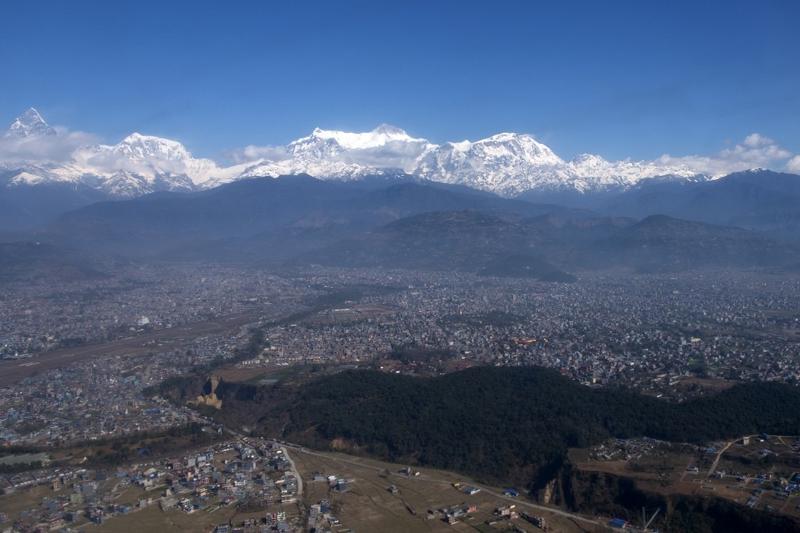 An aerial view shows Pokhara valley and Annapurna mountain range in Pokhara, some of 200 km west of Kathamndu, on Jan 22, 2020. (PRAKASH MATHEMA / AFP)
An aerial view shows Pokhara valley and Annapurna mountain range in Pokhara, some of 200 km west of Kathamndu, on Jan 22, 2020. (PRAKASH MATHEMA / AFP)
KATHMANDU - With the onset of the spring climbing season, Nepal's government, on Tuesday, directed all the expedition handling companies to submit health certificates of the climbers along with their travel history over the 14 days prior to their arrival.
Nepal has introduced the new rules after at least 9 climbers & guides died on the world's tallest mountain, Qomolangma, last spring in the traffic jam which brought the Himalayan country into global headlines
Issuing an 11-point directive, the Department of Tourism (DoT), the authorized government body that issues climbing permits, asked companies to submit health certificates of all climbers in the wake of COVID-19 fear.
"We have issued different directives to the companies to manage the expedition activities more smoothly in the 2020 spring season. It's basically for the safety of climbers for which we are trying to make the expedition agencies and climbers responsible," Meera Acharya, Director of the Mountaineering Department at DoT, told Xinhua.
ALSO READ: Expert climbers skeptical proposed rules for Everest will stop deaths
The department has also asked the companies to prepare the accurate insurance documents of expedition members and a detailed itinerary before applying for permit.
In the case of expedition support staff, including guides, high-altitude workers and base camp staff, the companies need to provide proof of insurance as per their responsibilities outlined in the Mountaineering Regulations established in 2002.
Unlike previous years, the companies need to submit all the necessary details in an online form in order to obtain the necessary climbing permits.
The new rules come after at least 9 climbers and guides died on the world's tallest mountain, Qomolangma, last spring in the traffic jam which brought the Himalayan country into global headlines.
In regard to the emergency rescue of the climbers, the department has asked helicopter companies and travel, tour and expedition companies to take patients to the hospitals with modern facilities.
"Last year, we had issued at least 381 permits to foreign climbers and there were many positive records as well. Despite many travel restrictions, we are hopeful that the number will be similar this season as well," Acharya shared with Xinhua.
Spring is the major climbing season in the Himalayan country which begins in April and extends through May.
READ MORE: Nepal issues record number of climbing permits to Mt. Qomolangma this spring
An expedition to the world's highest peak usually takes 45 to 90 days, a short climbing window, depending on favorable weather, and generally falls after mid-May.
Qomolangma has not only been an identity of this least developed country but also a major source of revenue. According to the Nepali regulation, every foreigner needs to pay US$11,000 as royalty while a Nepali climber only has to pay NRs 75,000 (around US$650) to scale the mountain.


